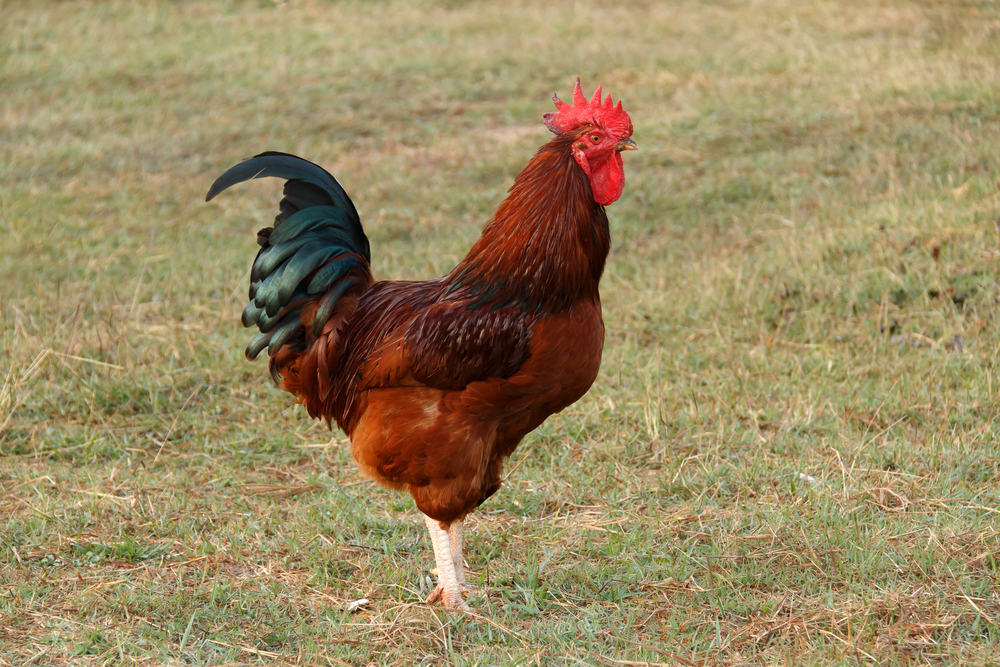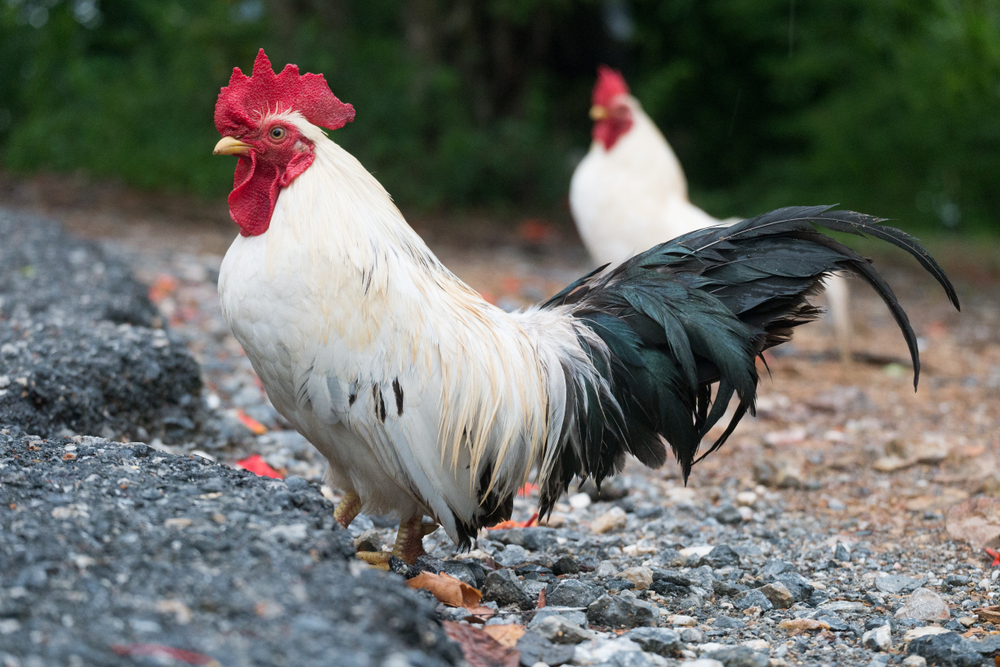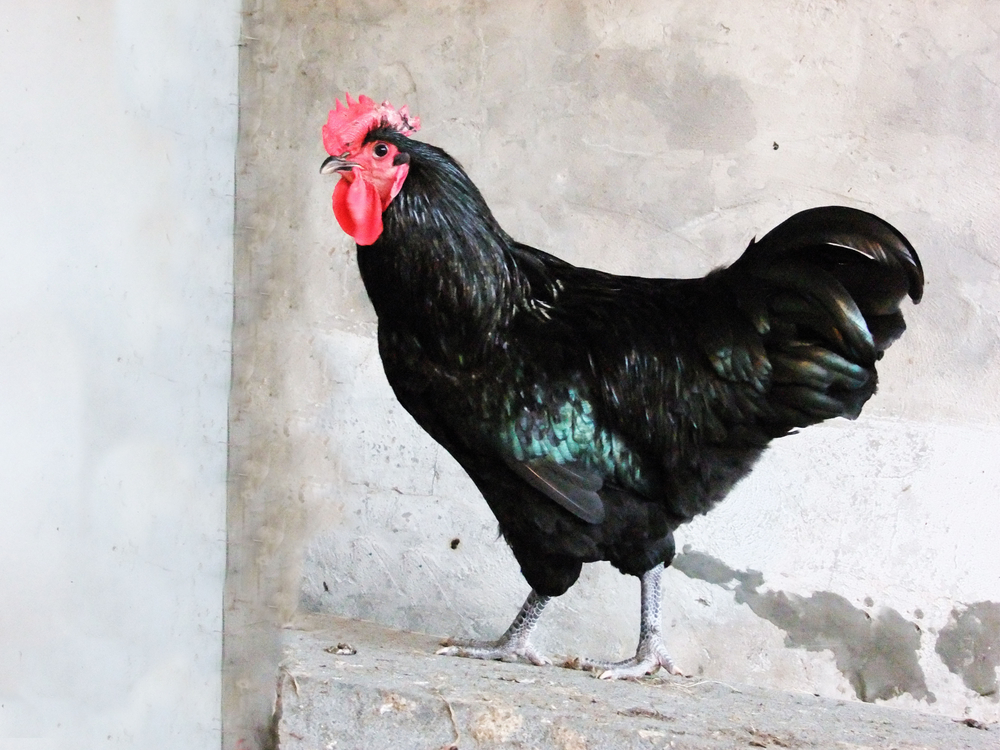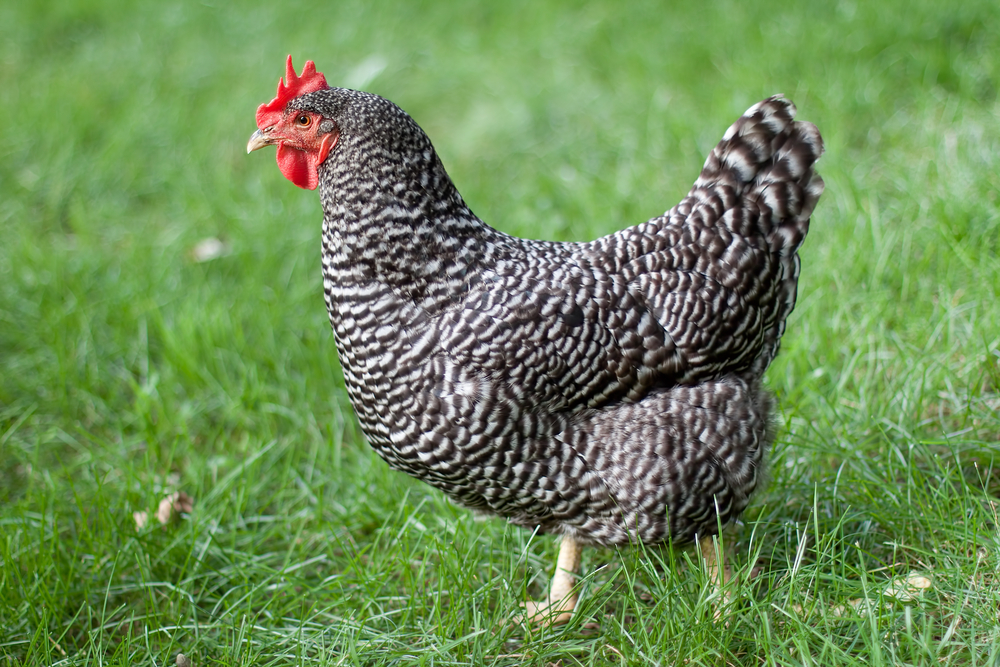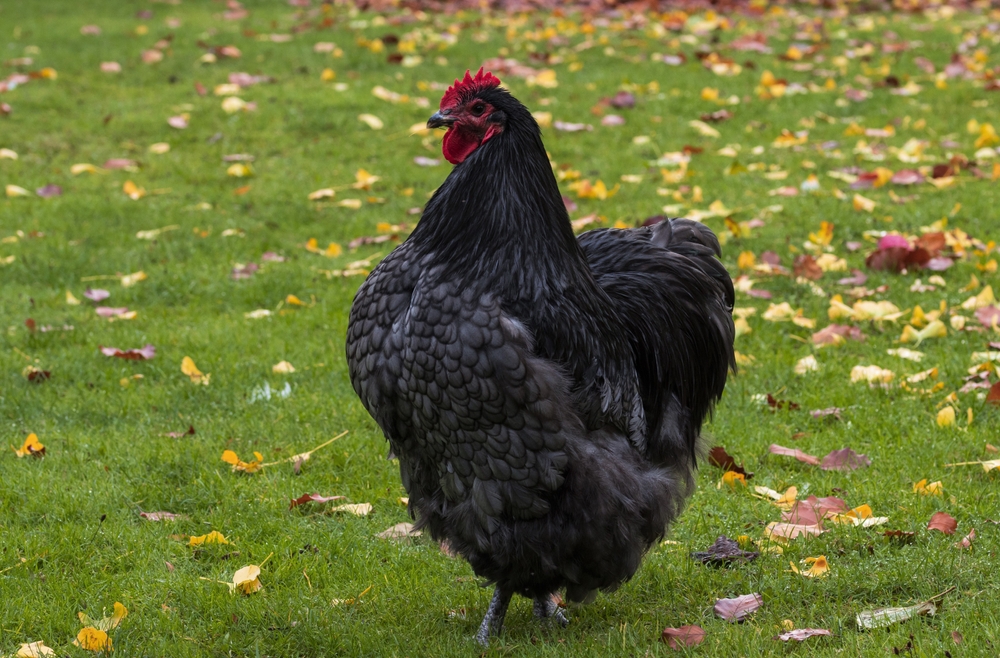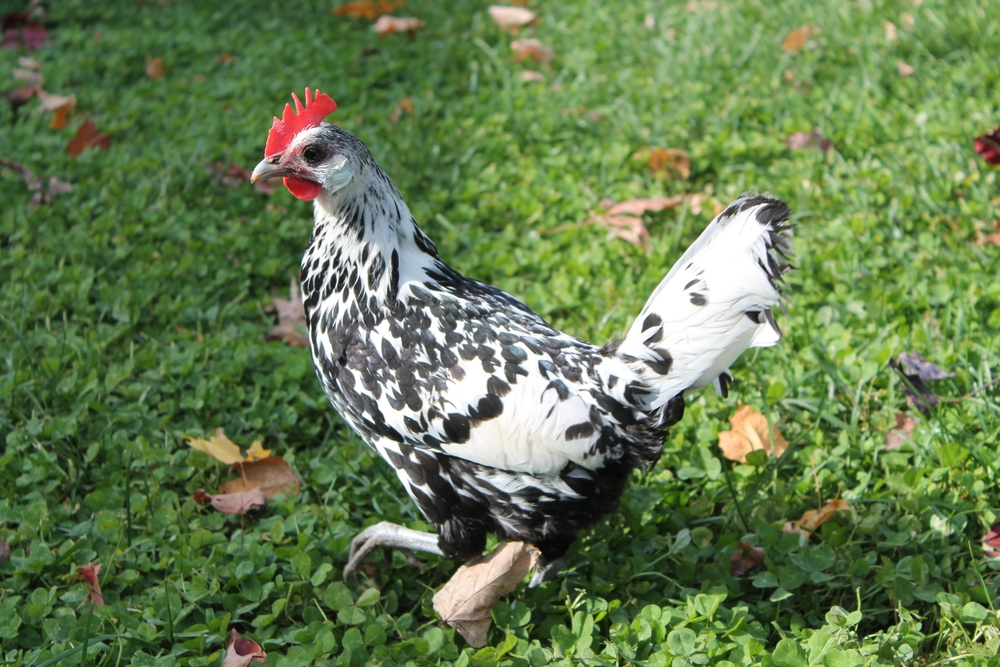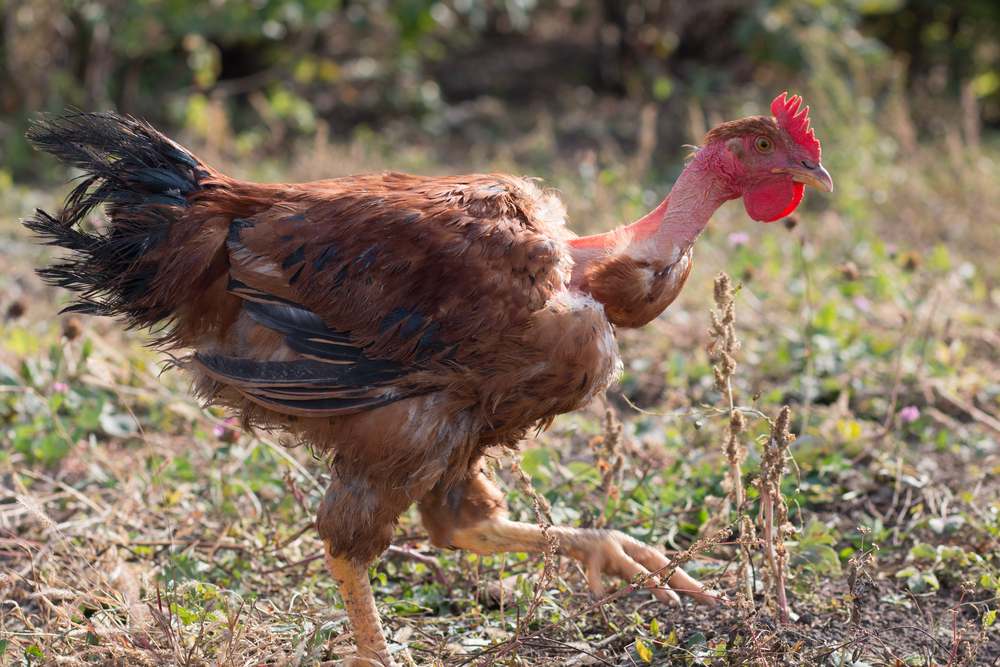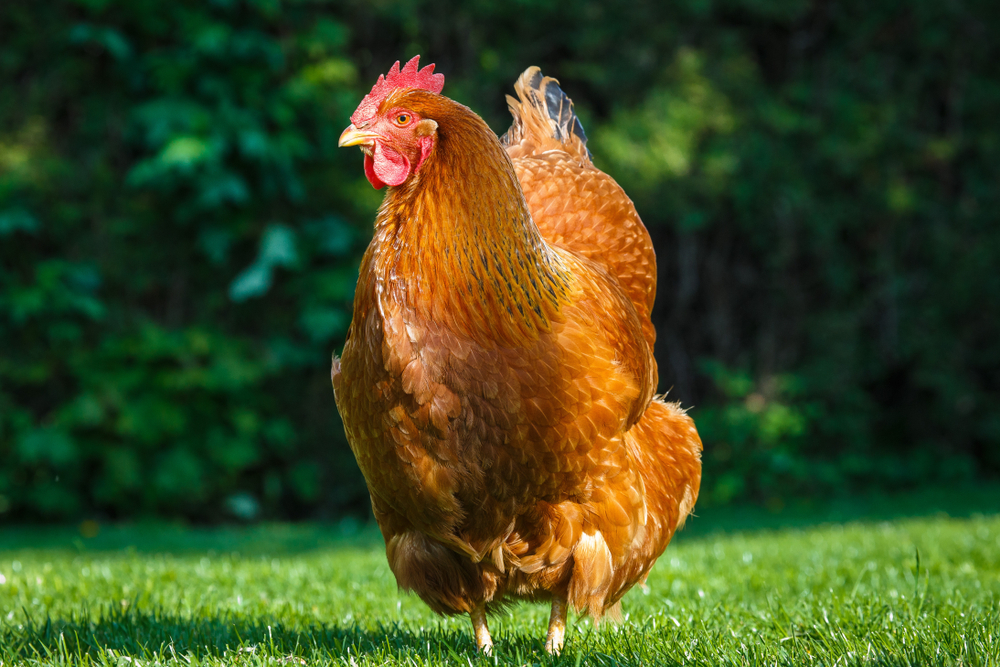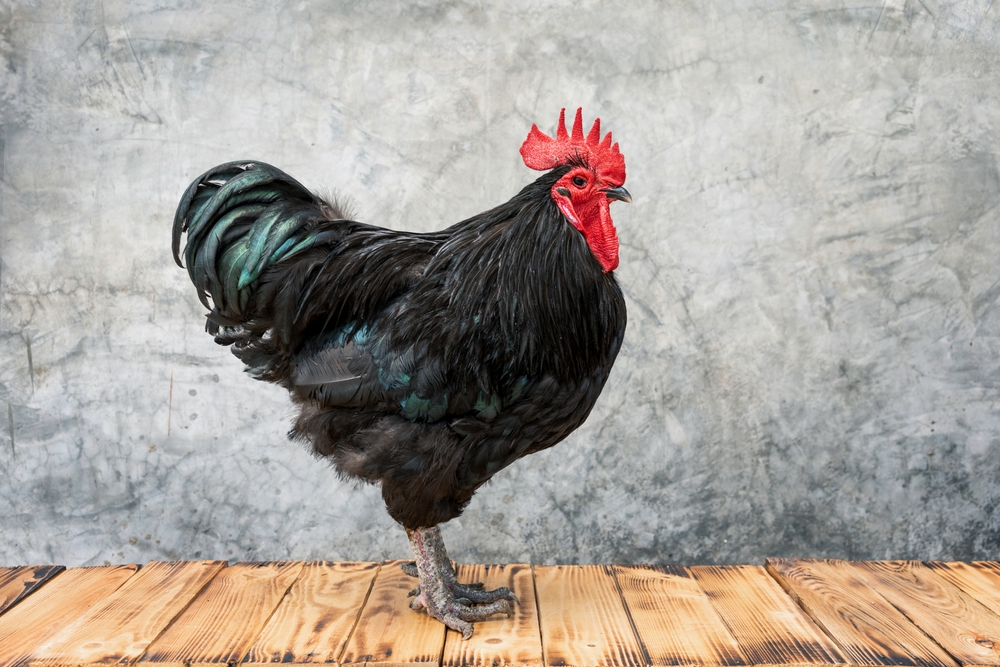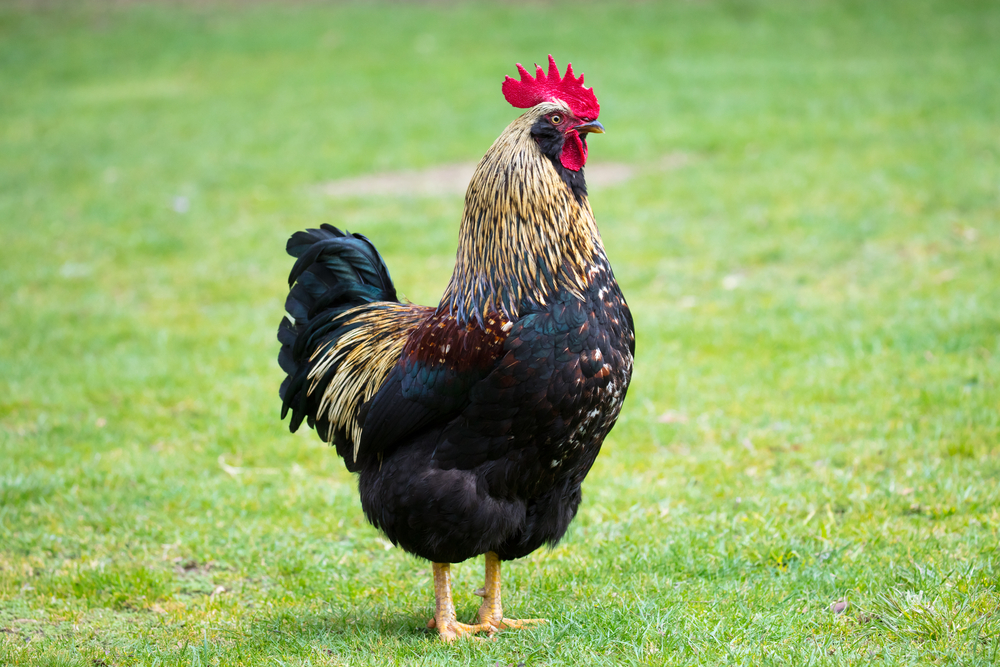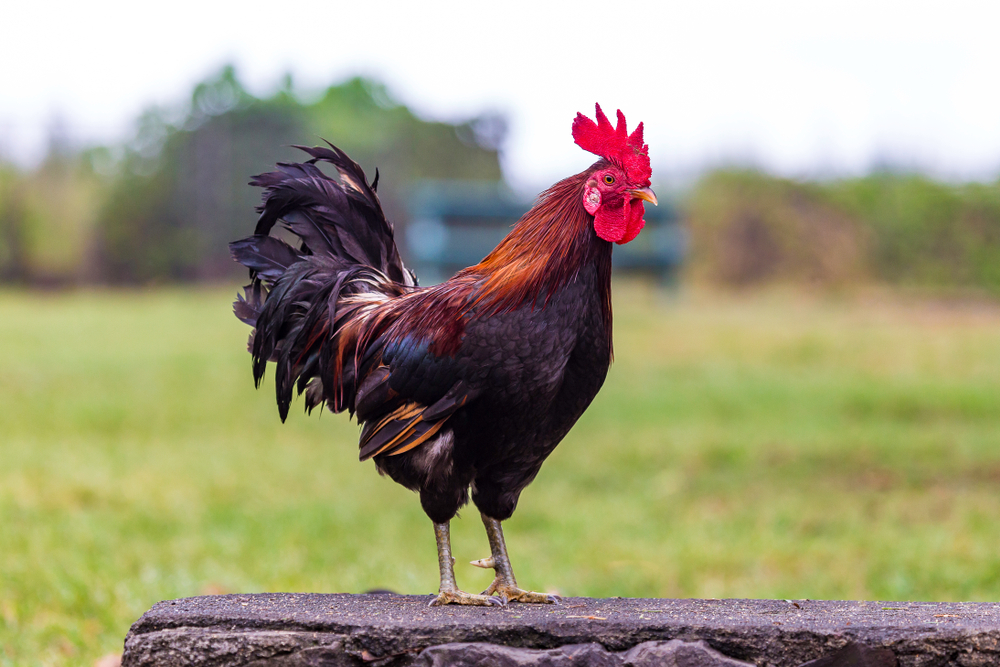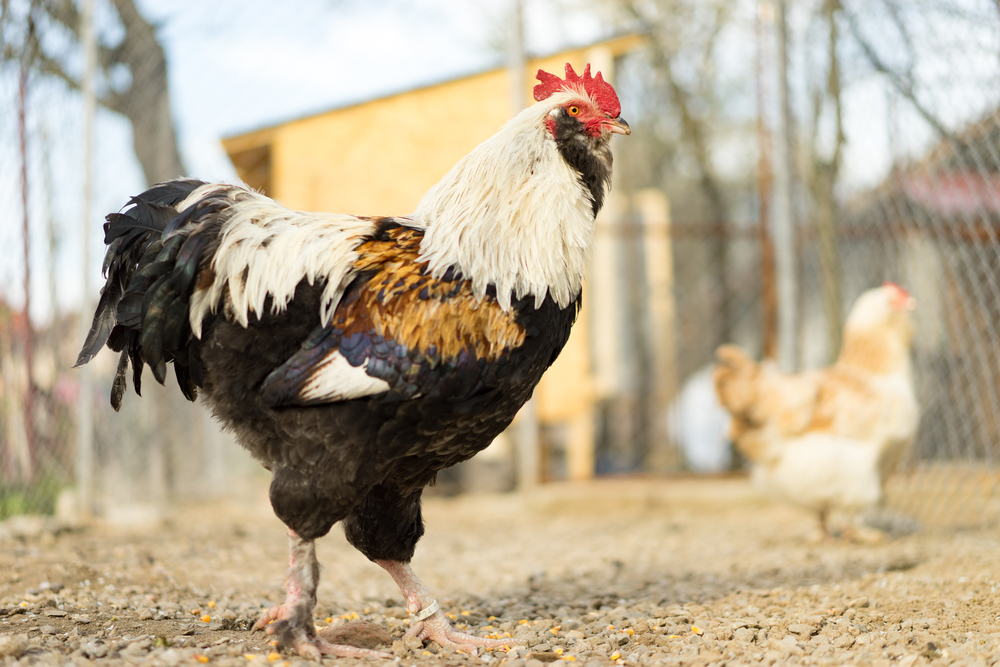The closest related breed to the Rhode Island Red is the New Hampshire Red, which was developed from Rhode Island Red stock in the early 20th century. While similar in body shape and utility, New Hampshire Reds mature faster and have lighter, more golden-red plumage, whereas Rhode Island Reds are darker mahogany and tend to lay slightly more eggs over their lifetime.
About
The Rhode Island Red is one of America’s most famous and enduring chicken breeds, developed in the late 19th centuryin Rhode Island and Massachusetts. Bred from a mix of Malay, Leghorn, and Asiatic stock, it was designed as a hardy dual-purpose bird capable of producing both excellent meat and abundant eggs.
This breed is medium to large in size, with roosters weighing 3.4–3.9 kg (7.5–8.5 lbs) and hens 2.9–3.4 kg (6.5–7.5 lbs). Its deep, rich mahogany-red plumage is one of its trademarks, along with a strong, rectangular body, yellow legs, and either a single or rose comb.
Rhode Island Reds are prolific layers, producing 250–300 large brown eggs per year, making them one of the most productive heritage breeds. They are also valued for their flavorful, well-fleshed meat, making them a true dual-purpose option.
Known for their hardiness, Rhode Island Reds tolerate a wide range of climates and adapt well to both free-range and confined housing systems. They are active foragers and can find much of their own food when given space, which helps reduce feed costs.
Temperament-wise, they are generally calm but can be more assertive than some docile breeds, especially roosters. This confidence, along with their resilience, contributed to their dominance on American farms before the rise of commercial hybrids.
The Rhode Island Red’s scientific classification is Gallus gallus domesticus, and it belongs to the family Phasianidae.
Physical Characteristics
Plumage:
Rhode Island Reds have rich, dark red to mahogany plumage with a subtle sheen. Feathers are hard, smooth, and lie close to the body, providing a streamlined yet full appearance. Some birds may show black edging in the main tail and wing feathers, particularly in roosters.
Head and Comb:
The head is moderately sized with a single, upright comb of 5 to 7 points, though a rose comb variety also exists. The comb, wattles, and earlobes are bright red. The beak is short, strong, and yellow to horn-colored. Eyes are reddish-orange and highly alert.
Body:
Rhode Island Reds have a rectangular, deep, and well-muscled body, giving them a solid dual-purpose build. The breast is full, and the back is long and flat, leading to a moderately upright tail.
Legs and Feet:
The legs are strong, clean (feather-free), and yellow, with well-spaced toes for stability. Shanks are moderately long, giving them good ground clearance for foraging.
Tail:
The tail is moderately full and carried at a slight upward angle. Roosters have long, flowing black or green-sheened sickle feathers, while hens have shorter, more compact tails.
Size:
-
Male Weight: 8.5 lbs (3.9 kg)
-
Female Weight: 6.5 lbs (3 kg)
-
Bantam Variety: Males around 34 oz (0.96 kg), females around 30 oz (0.85 kg)
Sexual Dimorphism:
Males are larger with more iridescent tail and wing feathers, longer sickles, and pointed hackle and saddle feathers. Females have rounder bodies and more subdued coloring.
Rhode Island Reds’ deep red plumage, strong frame, and excellent foraging build make them one of the most recognizable and reliable dual-purpose breeds in poultry history.
Reproduction
Mating Behavior:
Rhode Island Red roosters are generally confident and active breeders, showing strong courtship behaviors such as tidbitting calls, wing dropping, and circling hens before mating. They can be more assertive than some heritage breeds, so maintaining the right breeding ratio—1 rooster for every 8–10 hens—helps ensure good fertility without overmating.
Breeding Season:
They can breed year-round in mild climates, but peak fertility occurs in spring and summer. Their cold-hardiness allows continued breeding into cooler months without significant fertility loss.
Egg Laying:
Rhode Island Reds are highly productive egg layers, especially for a dual-purpose breed.
-
Annual Output: 250 to 300 large eggs per year.
-
Egg Color: Brown (light to dark).
-
Egg Size: Large.
They maintain better-than-average laying performance during winter compared to many heritage breeds.
Broodiness and Incubation:
-
Rhode Island Reds are seldom broody, having been selectively bred for continuous laying.
-
When hens do go broody, they can make capable mothers, but most breeding programs use incubators or broody foster hens from other breeds.
-
Incubation Period: About 21 days.
Chicks:
-
Appearance at Hatch: Fluffy, with a reddish-brown to golden color, sometimes with lighter underbellies.
-
Self-Sufficiency: Active, quick to forage, and hardy from the start.
-
Growth Rate: Moderate to fast, with good body development for both egg and meat production.
Maturity:
Pullets begin laying at around 5 months, and roosters reach full breeding maturity at a similar age.
Rhode Island Reds’ high fertility, excellent egg production, and robust chick survival rate make them a top choice for both backyard keepers and small-scale poultry producers.
Lifespan
Lifespan in the Farm/Backyard Setting:
Rhode Island Reds are hardy, long-lived birds that typically live 5 to 8 years in well-managed flocks. Their peak egg production is in the first 3 to 4 years, after which laying gradually declines, though they may still produce sporadically in later years.
Lifespan in Optimal Conditions:
With proper nutrition, secure housing, and veterinary care, Rhode Island Reds can live longer than average for production breeds.
-
Average Maximum Lifespan: 8 to 10 years
-
Exceptional cases: 10–12 years, particularly when kept for exhibition or as non-production birds.
Threats to Longevity:
-
Predation: Vulnerable to foxes, hawks, raccoons, and dogs when free-ranging.
-
Reproductive Strain: High early egg production can lead to reproductive tract issues such as egg binding, prolapse, or internal laying later in life.
-
Parasites and Disease: Susceptible to mites, lice, and worms if not managed preventatively, as well as respiratory illnesses in damp or poorly ventilated housing.
-
Aggression-Related Injury: Roosters, if overly dominant, can injure hens during mating without proper flock management.
Adaptations for Longevity:
Rhode Island Reds are cold-hardy, adaptable, and resilient, able to thrive in a wide range of climates and management systems. Their strong immune systems and active foraging nature contribute to long-term survival.
Eating Habits
Diet:
Rhode Island Reds are omnivorous foragers that perform well on a combination of commercial poultry feed and natural food sources.
-
Primary Feed: High-quality layer pellets or mash containing 16–18% protein, plus added calcium for eggshell strength.
-
Foraged Foods: Insects, worms, beetles, seeds, grasses, and weeds gathered while roaming.
-
Treats and Supplements: Whole grains (wheat, oats, corn), leafy greens, vegetable scraps, grit for digestion, and oyster shell or limestone for calcium.
Feeding Behavior:
-
Rhode Island Reds are active and efficient foragers, supplementing a large portion of their diet when given free-range access.
-
They have a steady appetite and adapt well to both pasture-based and confined feeding systems.
-
Roosters often tidbit to call hens to food sources.
Foraging Times:
-
Most active in morning and late afternoon, resting or dust-bathing during the hottest part of the day.
-
In cooler climates, they remain active foraging throughout most daylight hours.
Adaptations for Feeding:
-
Strong, slightly curved beaks ideal for breaking seeds and digging for invertebrates.
-
Balanced body weight allows them to range over varied terrain without tiring quickly.
-
Hardy digestive systems capable of handling diverse natural foods.
Captive Diet Management:
-
A steady supply of balanced feed ensures maximum egg production.
-
Overfeeding scratch grains or high-fat treats can lead to obesity, reducing laying efficiency and mobility.
Rhode Island Reds’ efficient foraging skills, adaptability to diverse diets, and steady feed conversion make them a practical choice for both backyard and production flocks.
Uniqueness
American Poultry Icon:
The Rhode Island Red is one of the most famous American chicken breeds, developed in the late 1800s in Rhode Island and Massachusetts. It is celebrated as the state bird of Rhode Island and is known worldwide for its productivity and resilience.
Exceptional Egg Production for a Heritage Breed:
Capable of producing 250–300 large brown eggs per year, Rhode Island Reds rival many commercial hybrids in output while retaining their hardiness and heritage traits.
Hardy and Adaptable:
These birds thrive in a wide range of climates—from cold northern winters to hot southern summers—making them highly versatile for different farming systems.
Strong Dual-Purpose Qualities:
Originally bred for both eggs and meat, they maintain a well-muscled frame that provides quality table meat in addition to high egg production.
Low Maintenance and Disease Resistance:
Rhode Island Reds are known for their robust health and ability to withstand common poultry ailments better than many specialized production breeds.
Rich Mahogany Plumage:
Their deep red to mahogany feathers, often accented with black in the tail and wings, make them visually striking in addition to their practical qualities.
Long-Term Productivity:
While many breeds slow dramatically after two years, Rhode Island Reds often continue laying reliably for several more seasons.
The Rhode Island Red’s blend of productivity, durability, and classic American heritage has made it a favorite among farmers and backyard keepers for over a century.
Be the First to Share Photos of This Species.
FAQ’s
1. What is the closest species to the Rhode Island Red?
2. How does the Rhode Island Red compare to other chickens?
Rhode Island Reds differ from many other breeds by:
-
Combining high egg production with a solid dual-purpose body, unlike lighter egg-only breeds such as Leghorns.
-
Offering cold-hardiness and heat tolerance, making them more adaptable than many heritage layers.
-
Being more independent and active foragers than heavier meat-focused breeds like Orpingtons or Brahmas.
-
Maintaining strong, long-term laying ability beyond the first two years, unlike many commercial hybrids.
-
Possessing a distinctive rich mahogany color that sets them apart visually in a flock.
3. What national parks provide the best chances to see a Rhode Island Red?
As a domesticated heritage breed, Rhode Island Reds are not found in the wild. However, they can be seen at heritage farms, agricultural history sites, and rare breed conservation programs, including:
-
Coggeshall Farm Museum (Bristol, Rhode Island, USA)
-
Old Sturbridge Village (Massachusetts, USA)
-
Billings Farm & Museum (Vermont, USA)
-
Colonial Williamsburg Rare Breeds Program (Virginia, USA)
-
Sovereign Hill (Victoria, Australia)
These locations keep Rhode Island Reds as part of agricultural heritage displays and breeding programs.



































































